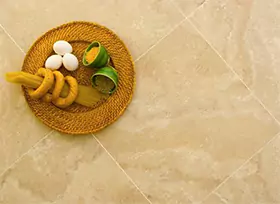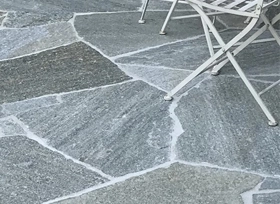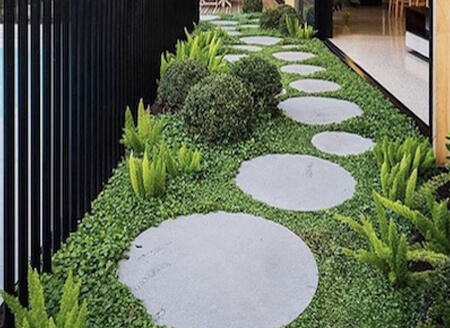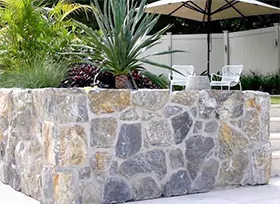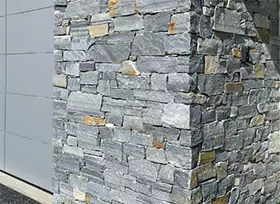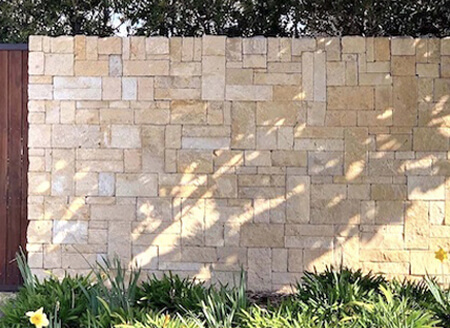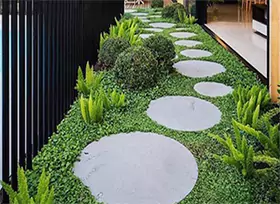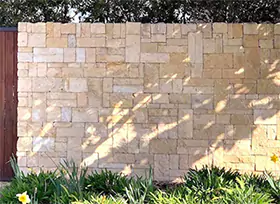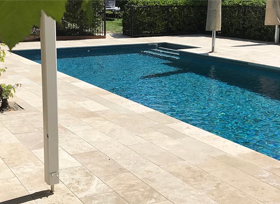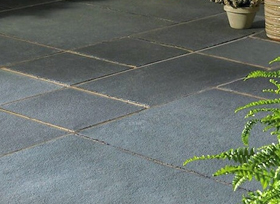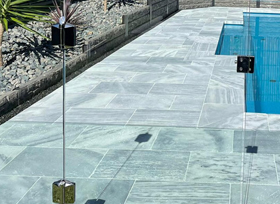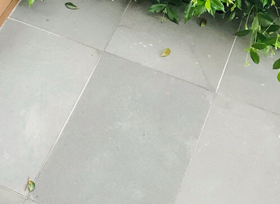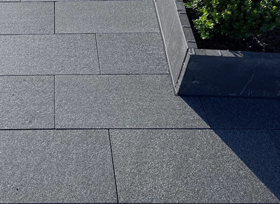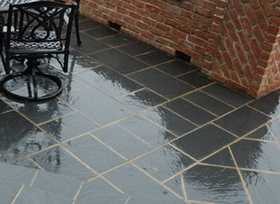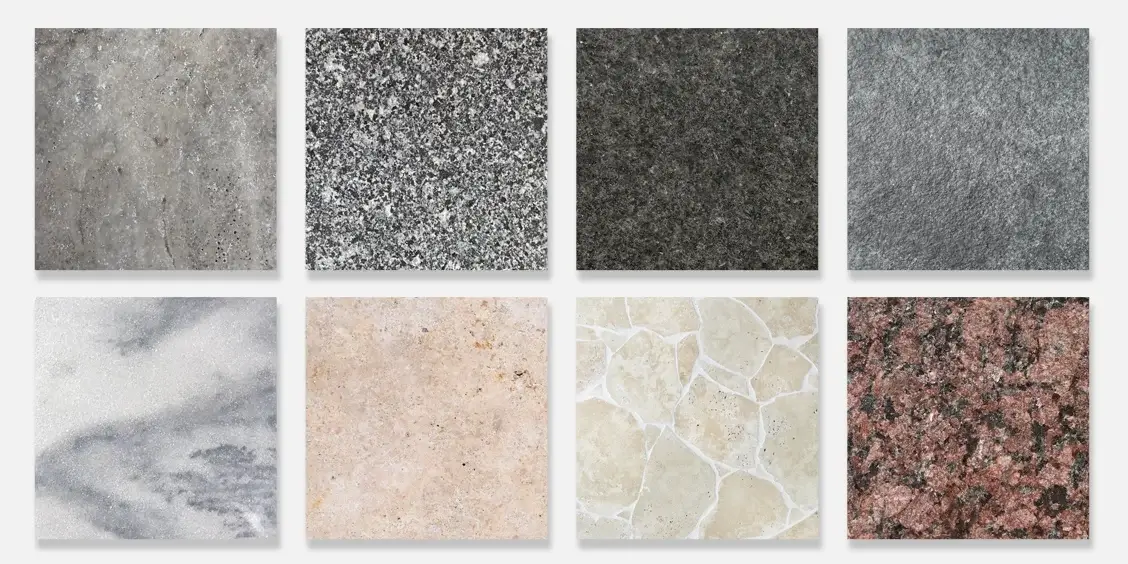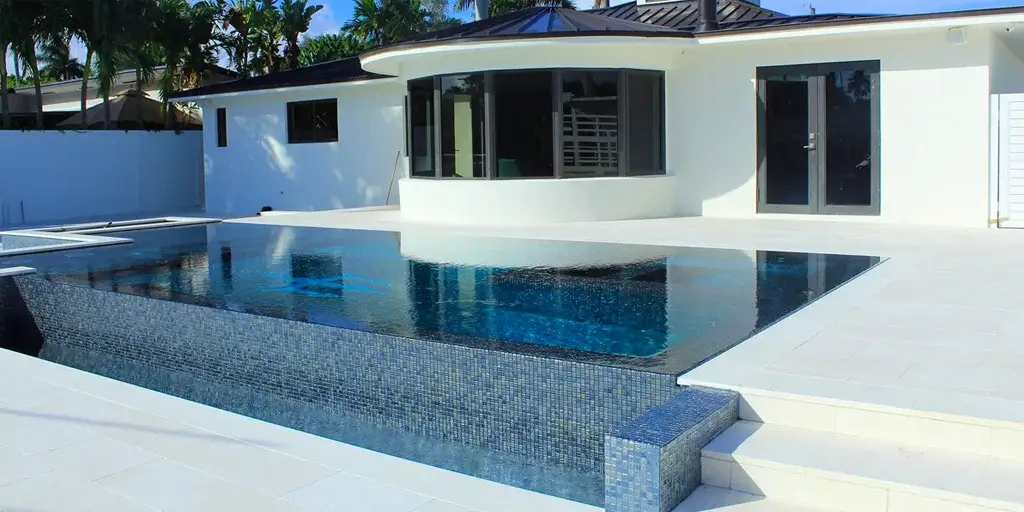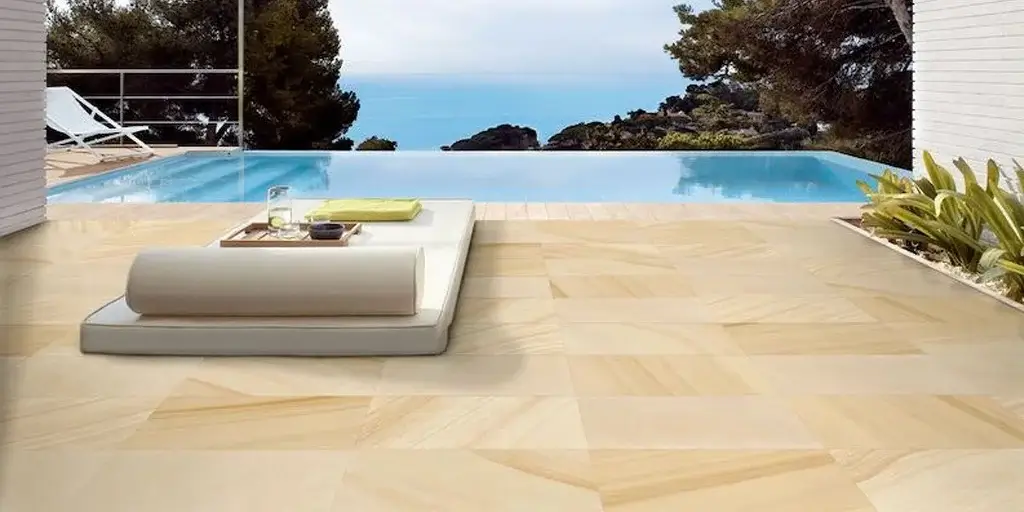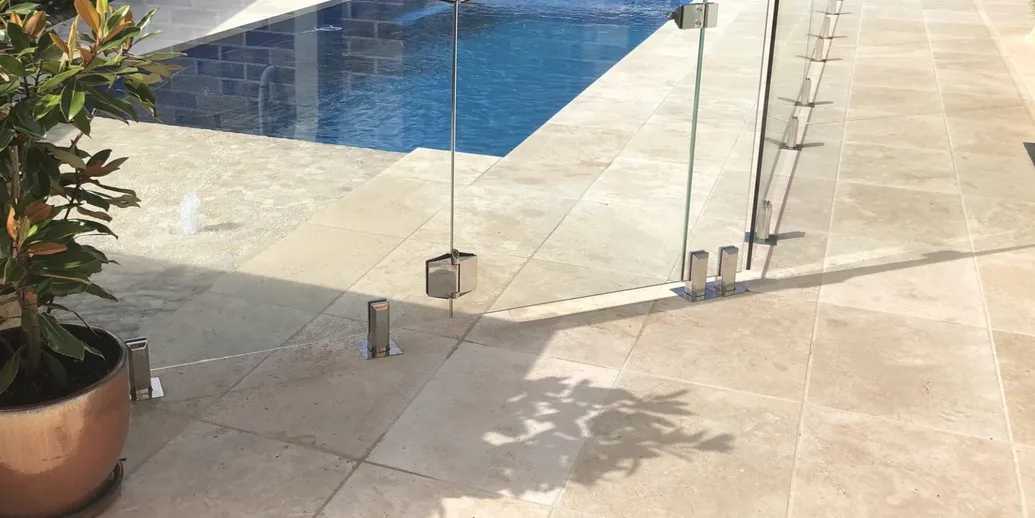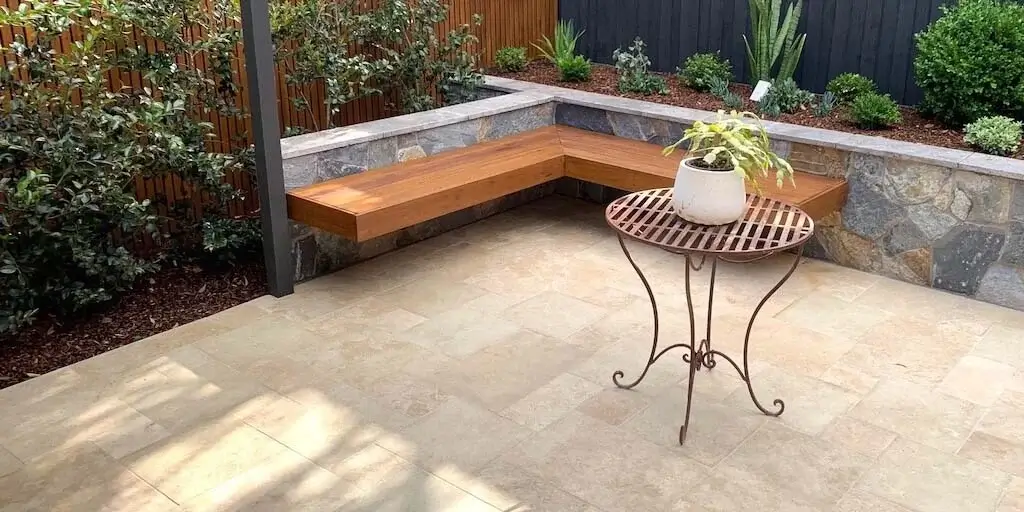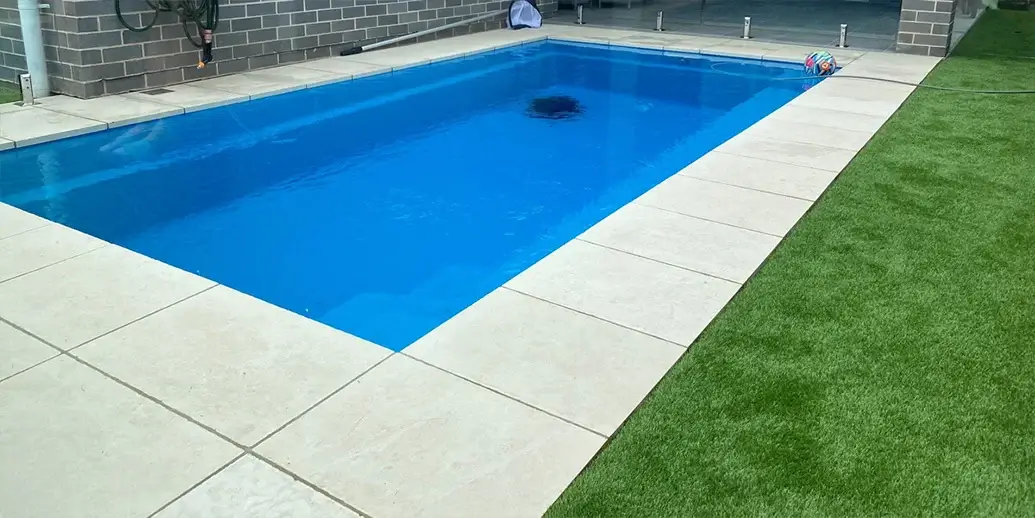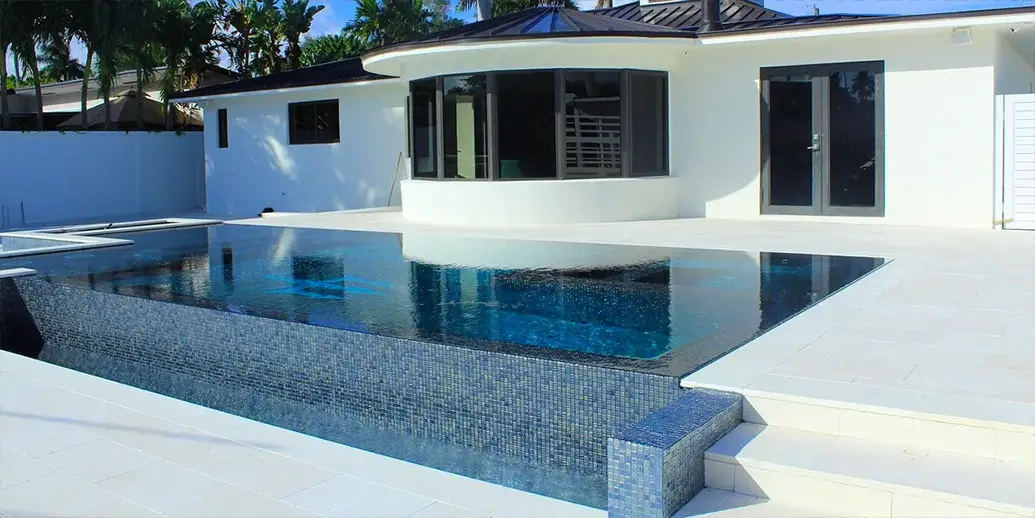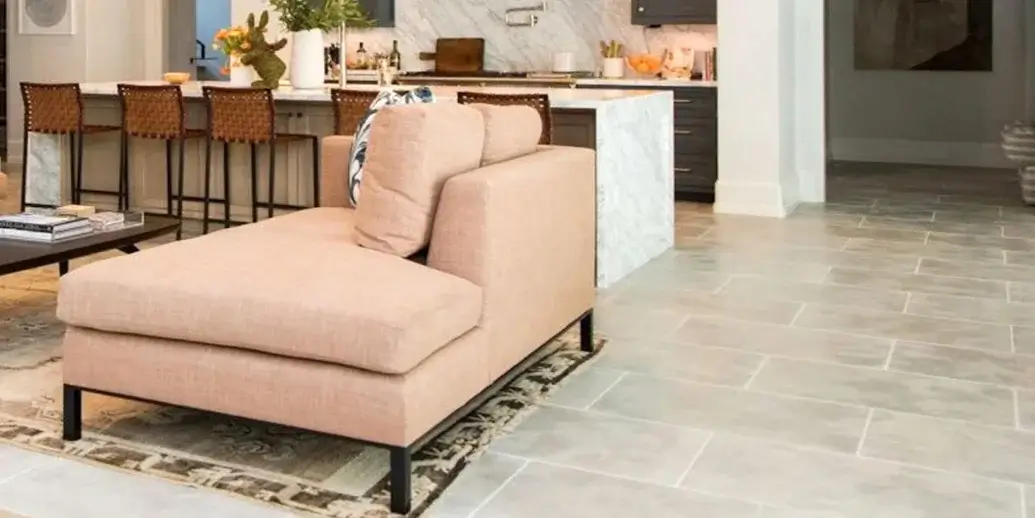Have you ever wondered what are tiles are made of and why is it important to understand this?
We all love tiles' exquisite patterns, hues and designs; comprehending their construction extends beyond just aesthetics. Each type of tile, from ceramic to real stone, has a distinct makeup that affects its toughness, upkeep needs and suitability for various uses.
Do you want to discover the mysteries of these flexible building materials?
What essential components give tiles their beauty and strength?
Join us on this fascinating adventure as we explore the many types of tiles' compositions and why understanding them is important. Prepare to explore the mysteries of ceramics, be amazed by the wonders of natural stone and learn how knowing the materials used to manufacture tiles may help you make wise decisions for your residential or commercial builds.
Understanding what tiles are made of is important for several reasons:
- Material Selection: It is easier to select the ideal material for your unique demands if you are aware of the composition of tiles. Different materials are useful for various uses because of their strength, toughness and aesthetic variations. Knowing the different types of materials can help you choose the tiles that best suit your needs.
- Performance and Durability: The longevity and performance of tiles are directly influenced by their composition. Some materials have higher wear, stain and scratch resistance, making them perfect for high-traffic areas or locations prone to spills. Knowing the materials better enables you to select tiles that can handle the demands of the intended environment, extending their lifespan and lowering the replacement frequency.
- Aesthetic Appeal: The look and attractiveness of tiles are influenced by their composition. As a result of different materials' distinctive textures, hues and patterns, you can produce particular design aesthetics. You may choose tiles that complement your preferred design and improve your room's overall look and feel by being aware of the materials.
- Maintenance and Care: Maintenance requirements vary depending on the type of tile used. Understanding the composition can help you properly clean and maintain the tiles. While some materials are easy to clean and maintain, others might need special cleaning products or techniques. By being aware of the components, you can give the tiles the proper care they need to keep their beauty and long life.
- Budget Considerations: Knowing how much different types of tile cost will help you plan your budget wisely. Natural stone, for example, may cost more than ceramic or porcelain tiles in some cases. Depending on your financial limits, you may decide wisely if you know the materials and their price ranges.
- Environmental Impact: Making ecologically responsible decisions might also be aided by knowing how tiles are made. Natural stone or recycled tiles, for example, have a smaller environmental impact than other materials. Knowing the materials allows you to choose alternatives that support your sustainability objectives.
Types of Tiles:
Ceramic tiles are created using a combination of clay, minerals and water. High temperatures are applied during kiln firing, producing a resilient and adaptable tile alternative. Ceramic tiles are appropriate for various design types since they come in multiple colours, sizes and finishes. They are renowned for being reasonably priced, simple to maintain and impervious to moisture, stains and scratches.
Porcelain tiles are created from finer clay and minerals than other ceramic tiles. This composition produces a denser and more impervious tile than regular ceramic tiles. Due to their exceptional durability, porcelain tiles are perfect for high-traffic areas. They can resemble natural stone or wood because of their wide range of hues, textures and sizes.
Natural Stone Tiles: These tiles are made from sustainable building materials, such as Marble, Travertine, Slate, Sandstone and Granite. Each kind of natural stone tile has its composition, qualities and aesthetic appeal. Any place is made elegant and opulent by natural stone tiles. They are renowned for their strength, endurance and enduring beauty. We recommend using natural stone out of all the options because of the sustainability factor.
Types of Natural Stone Tiles:
Readers can choose the materials that best suit their own needs and preferences by being aware of the composition of these natural stone tiles. We will also discuss the benefits of using natural stone tiles, including their aesthetic appeal, robustness and adaptability.
Travertine: Natural limestone deposits that have undergone geological processes are the source of these tiles. Travertine tiles, primarily made of calcite, have unusual porous structures. Their wide spectrum of colours, from white to walnut, is influenced by the presence of various minerals. The composition of Travertine affects its porosity and stain susceptibility; therefore, understanding it is crucial. The beauty of Travertine tiles must be preserved through proper sealing and upkeep. Check out our Silver Travertine, Classic Travertine, Classic Light Travertine and Classic Blend Travertine.
Sandstone: These tiles are made of compressed sand grains bonded together by silica, a type of natural cement. They have earthy hues, from warm yellows to deep reds and browns and rich textures. Sandstone's durability and resistance to weathering are influenced by its composition, which is why understanding this information is essential. Due to their inherent beauty and resilience to various environmental factors, Sandstone tiles are perfect for indoor and outdoor applications. Check out our range of Ash Grey Sandstone, Teakwood Sandstone, Himalayan Sandstone and Sunrise Gold Sandstone.
Bluestone: Basalt, sometimes referred to as Bluestone, is an igneous rock created when molten rock hardened. It is a sought-after material for tiles because of its distinctive blue-grey colour, strength and durability. Comprehending Bluestone's composition is crucial because it affects how resistant it is to heat, abrasion and scratching. The distinctive natural patterns that Bluestone tiles frequently have added to their aesthetic appeal. Understanding the components of Bluestone permits appropriate maintenance procedures to guarantee its durability.
Limestone: The sedimentary rocks that make up Limestone tiles are created by accumulating shells, coral and other organic things. They are available in a wide variety of hues, including beige, grey, yellow and brown. Limestone's composition affects its hardness and susceptibility to etching from acidic chemicals, therefore, understanding it is essential. Limestone tiles must be properly sealed and maintained to keep their aesthetic value and stain resistance. Check out our tiles range in Indiana White Limestone, Navona Limestone, Oglio Limestone, Crema Nuova Limestone, Tandur Grey Limestone, Midnight Glow Limestone, Magnolia Limestone and Tuscan Beige Limestone.
Granite: Quartz, feldspar and mica make up the majority of Granite's igneous rock composition. Granite tiles are a popular option for a variety of applications because of their renown for being incredibly durable and long-lasting. Knowing the components of Granite is crucial because they affect how resistant stone is to heat, scratches and stains. Granite tiles' distinctive colours, patterns and finishes are also a result of their composition. Granite may be properly cared for and maintained to ensure its longevity and maintain its natural beauty with knowledge of its composition. Check out our tiles range in Austral Verde Granite, Diamond Black Granite, Jesper Red Granite, Juparana Granite, Honey Jesper Granite, Silver Grey Granite, Samson Grey Granite, Carbon Black Granite, Raven Black Granite and Highland Grey Granite.
Slatestone: The metamorphic rocks are used to create Slatestone tiles, basically volcanic ash and clay. These tiles have a distinct split surface and unusual layered structure, giving them a rustic natural appearance. Slatestone has several colours, including grey, black, green and multicoloured. Understanding Slatestone's composition is crucial since it influences how well it resists slippage and can sustain high temperatures. The longevity and beauty of Slatestone tiles are ensured by knowledge of suitable cleaning and sealing processes. Check out our range in African Gold Slatestone, Rajah Multi Slatestone and Midnight Black Slatestone.
Marble: They are made of metamorphic rocks throughout time and experience intense heat and pressure. Marble, mainly made of calcite, has beautiful veining and colour variations. Understanding marble's composition is essential since it affects how susceptible stone is to etching. Check out our tiles range in Argento Marble, Atlantic Grey Marble and Tundra Grey Marble.
In conclusion, understanding the materials used to make tiles is crucial for budgeting, performance evaluation, aesthetic considerations, maintenance planning and environmental awareness. By being aware of the composition, you may make judgements that produce durable, aesthetically appealing and environmentally responsible tile installations. Check out our wide range of tiles in various types, textures and colours to choose the one that suits your requirements the best.
*Disclaimer: All information and advice given above in the blog are to the best of our knowledge. Please reconfirm at your end before execution.




